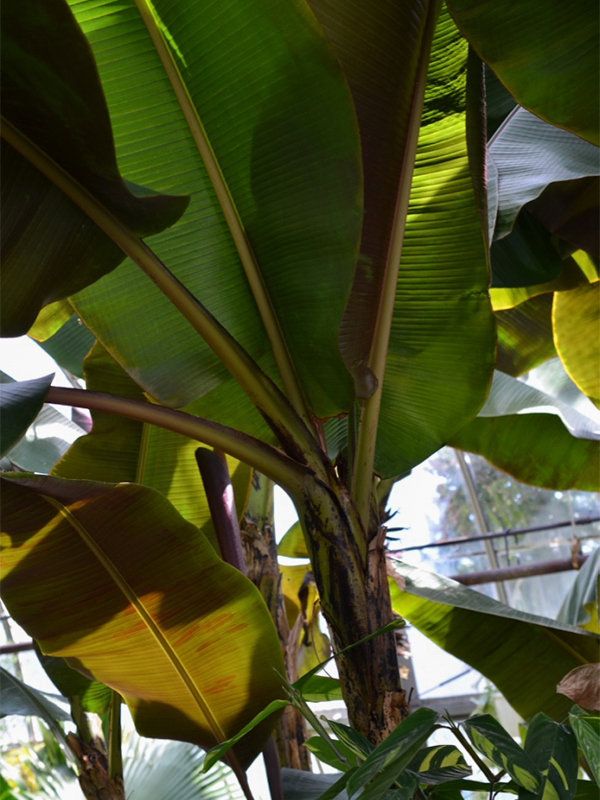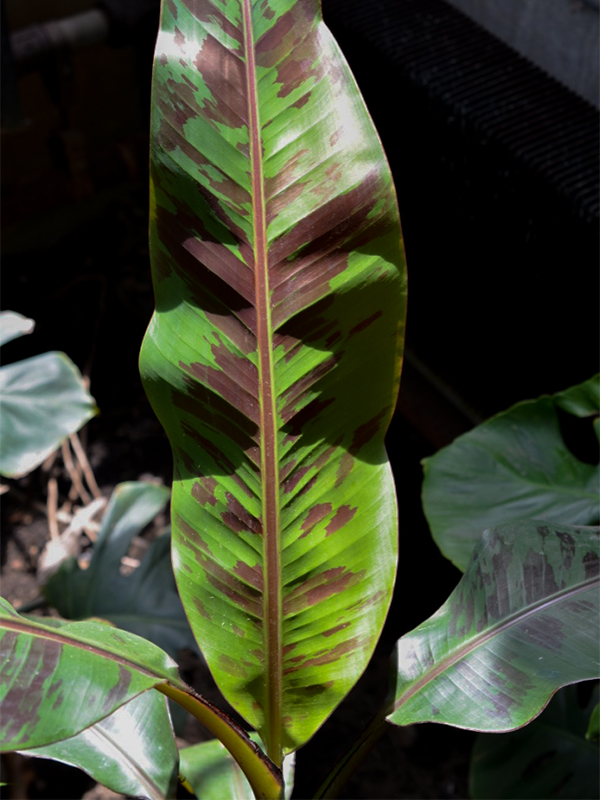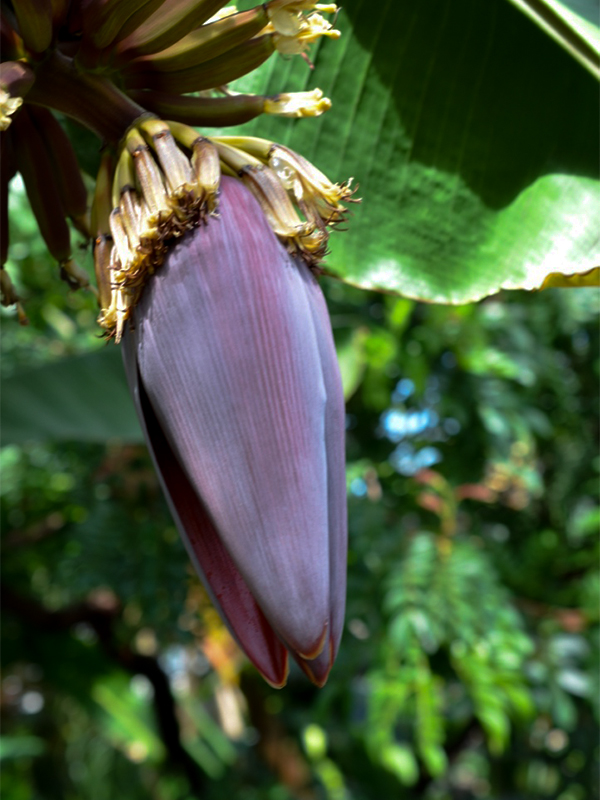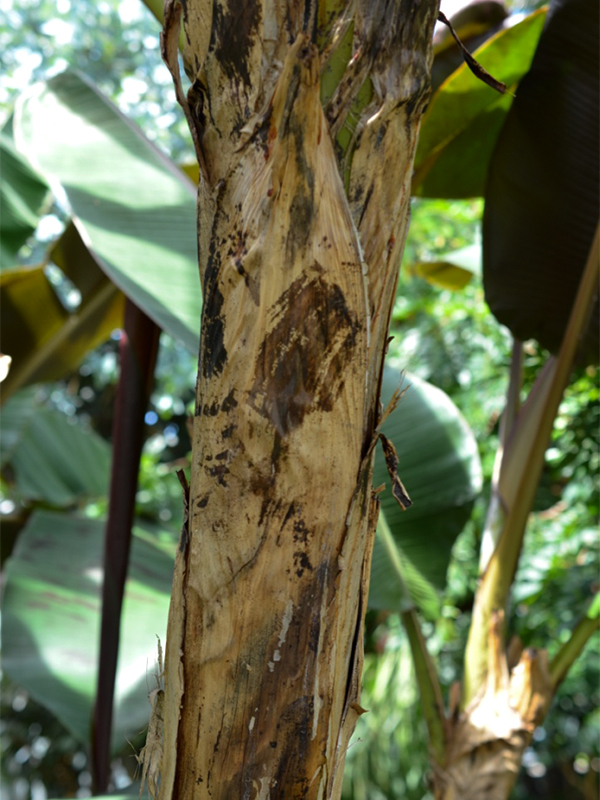| General Description | Musa is a genus of 68 species and 2 hybrids that includes bananas and plantains. |
| ID Characteristic | The iconic edible fruit that the plants produce and the dark red 'splotches' on its leaves. |
| Propagation | By division of offsets. |
| Cultivation | Best grown in full sun with organically rich, medium moisture, well-drained soil. Needs consistently moist soils that do not dry out. Fertilize regularly during growing season. Site plants in areas protected from strong winds which can severely damage the large leaves. |
| Pests | Aphids, spider mites, mealybugs, scale, anthracnose, wilt and mosaic virus. |
| Notable Specimens | Centennial Conservatory, Thunder Bay, Ontario, Canada. |
| Bark/Stem Description | Leaf sheathes overlap to form a trunk-like pseudostem (false stem). After flowering and fruiting, the pseudostem dies, but the roots push out new shoots (suckers) which form new pseudostems. |
| Leaf Description | Huge, paddle-shaped leaves with dark red-brown variegation, leaves to 2 - 3.5 m long. |
| Flower Description | Large and showy. |
| Fruit Description | Edible fruits known as bananas or plantains. |
| Colour Description | Leaves are green and red-brown. Fruit can be green, yellow, or red. |
| Texture Description | Leaves are smooth and leathery. |




